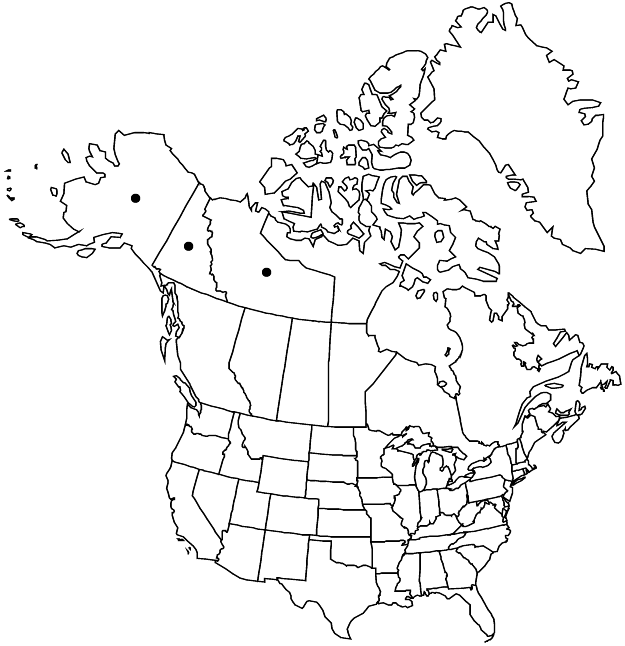Micranthes razshivinii
J. Bot. Res. Inst. Texas 1: 1021. 2007,.
Plants solitary or in clusters, rhizomatous. Leaves basal; petiole ± distinct to indistinct, flattened, (0.3–)0.5–3 cm; blade oblanceolate to narrowly oblanceolate or narrowly spatulate, sometimes ± narrowly obovate, (0.5–)0.9–3.5 cm, ± fleshy, base ± attenuate to cuneate, margins (3–)5–7(–9)-toothed in distal 1/2 (teeth 0.5 mm), sparsely ciliate, surfaces glabrous. Inflorescences (2–)4–16-flowered, open, racemiform, sometimes paniculiform thyrses, sometimes solitary flowers, 3–15.5(–17 in fruit) cm, glabrous; (bracts reduced). Flowers: sepals reflexed, oblong or lanceolate to ovate; petals white to cream, often purplish, not spotted, linear to ± narrowly elliptic, not clawed, 2–4 mm, usually longer to sometimes shorter than sepals; filaments linear, flattened; pistils connate 1/2+ their lengths, (conic); ovary ± 1/2 inferior. Capsules dark purple-black, valvate.
Phenology: Flowering summer.
Habitat: Tundra, stream banks, alpine rocky slopes
Elevation: 400-2000 m
Distribution

N.W.T., Yukon, Alaska.
Discussion
Micranthes razshivinii is found in eastern Alaska (eastern Brooks Range, from Atigun Pass eastward and from Mount McKinley National Park eastward) into Yukon and in the Mackenzie and Richardson mountains in the Northwest Territories. Its leaves are generally narrower than those of M. calycina and the teeth are less numerous. The glabrous inflorescence branches of M. razshivinii readily distinguish it from M. calycina, which has hairy branches. The ranges of the two species may overlap or at least abut in the Atigun Pass area of the Brooks Range, in the Mount McKinley National Park area, and possibly in the Saint Elias Mountains. Hybrids would be very difficult to distinguish from the parents but may occur. They have not been observed in the material examined. Plants of this species sometimes have been misidentified as M. davurica (Willdenow) Small, a species restricted to eastern Siberia.
Selected References
None.